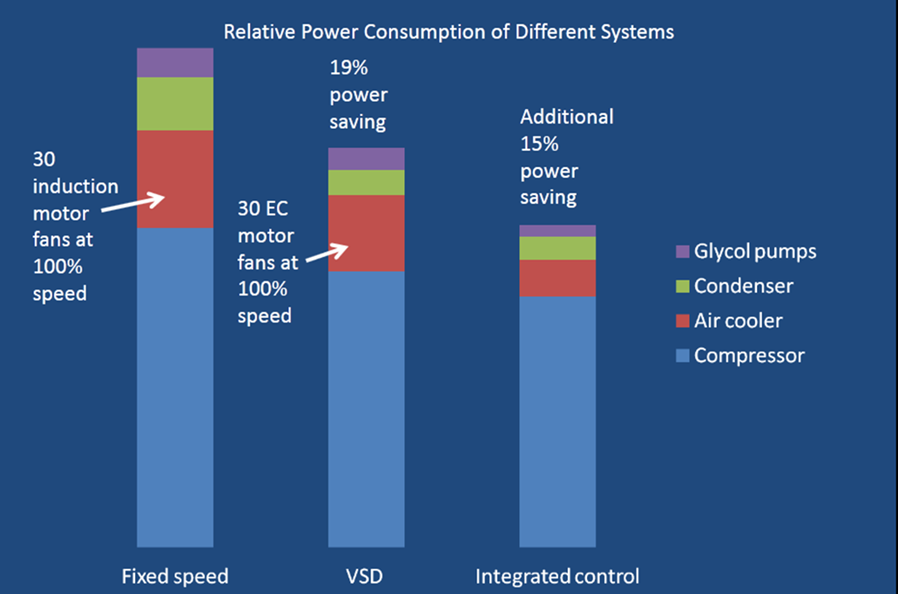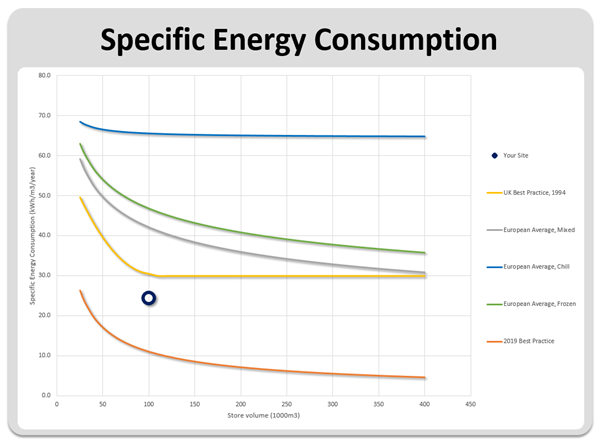
TOWARDS A NET ZERO COLD CHAIN

Dr Rob Lamb | Sales & Marketing Director | Star Refrigeration
rlamb@star-ref.co.uk
@roblamb73
The Engineering Road to Net Zero Cold Chain
September 2020
The road to net zero can look a daunting prospect despite recent achievements in energy reduction by the cold storage sector. Reported performance in 2017/2018 indicated that reductions of 16% were realised against a Climate Change Agreement (CCA) target of 9.6%. This sounds like great news but whilst the overall target was exceeded, around 45% of businesses fell short, indicating more work to be done. There is reason to be confident that significant steps can be taken so let review how we’ve got to where we are now and what the future could hold.
The most noticeable step towards achieving energy reduction targets in recent years has been an increased focus from cold store operators on electricity usage. Total cost of ownership for a refrigeration system is made up of initial capital expenditure, annual maintenance/service charges and energy consumption over the plant’s lifetime. Industrial refrigeration plant has a life expectancy of 20+ years, and energy typically accounts for more than 60% of the total cost of ownership. There has been a growing recognition that focusing on energy helps businesses to achieve both their environmental and financial goals.
There has been considerable progress in technology since the CCAs began in 2013, enabling operators to replace existing components and install new systems with efficiency-improving hardware such as variable speed drive motors for compressors and pumps, and EC fans for air coolers and condensers. Application of this technology has been shown to provide a saving of around 19% when compared to traditional technology. In addition to hardware improvements, there have been significant improvements in refrigeration system control software. Modern control systems are able to integrate variable speed technology and optimise other aspects of the plant’s performance-based cooling demand and ambient temperature. This can deliver savings further savings of around 15% throughout the year and provide insight into when the plant is moving away from peak performance and needs maintenance

Current focus includes the collection and analysis of energy data for benchmarking and identifying where operational efficiency can be improved. Research programmes have provided benchmark energy consumption data for operators to measure their current consumption and compare with similar facilities in the UK and across the world. This ability to compare provides crucial impetus in reaching net zero.
A recent publication proposes new ‘Specific Energy Consumption’ best practice targets for chilled and frozen warehouses when adopting a focus on energy consumption and using modern, efficient refrigeration plant. This will measure performance based on annual energy consumption per cubic meter of volume, and provide an understanding of the likely energy saving benefit from capital investment. Using this insight will then enable operators to set goals for future energy reduction

Advancements in data collection and cloud based analysis also mean that real time plant performance can be measured and compared with the original design expectations. The resulting energy gap is reported, and from this insights are generated into ways of improving performance. Data from over 50 live installations indicates that this real time data analysis can save between 10% and 30% of annual running costs, helping to move operators along the road to net zero.
As for the future, the first key step has to be reducing the demand for cooling whilst not interfering with (and possibly enhancing) the warehouse operation. This means innovation in the design of facilities to reduce the transmission of energy into the building from the outside though doors, walls, ceilings and from other sources such as automation, people and product.
The next step will be to deliver the cooling in the most effective manner and to find uses for the ‘waste’ energy which is currently rejected into the atmosphere. This is where a more joined up approach to cooling and heating will provide real benefits, as it substantially reduces energy bills and carbon output
To achieve the future target of net zero will need business owners to work in collaboration with leading industry innovators to make the necessary step changes happen!
Headline Partners
Supported by

